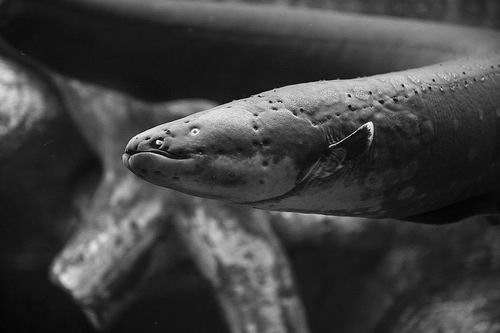
Privacy statement: Your privacy is very important to Us. Our company promises not to disclose your personal information to any external company with out your explicit permission.
A flexible and transparent power source inspired by electricity that can be used to power electronic devices worn by the body, such as pacemakers, implanted sensors, or even prosthetic organs.
The researchers described the prototype of this power source in the December 13th issue of Nature, which runs in salt and water solutions, but researchers hope that future versions will receive energy from body fluids.

Electricity
"Our man-made power generation organs have many features that traditional batteries don't have," said Thomas Schroeder. He is a chemical engineer at the University of Michigan in Ann Arbor, USA, and is one of the co-leaders of the study. Schroeder said that, in addition to its ideal physical properties, "it is not potentially toxic and it can be run in potentially regenerative electrolyte solutions."
In order to design a power source that does not cause biological repulsion, Schroeder and his colleagues have drawn inspiration from saury or eel, which can protect themselves by emitting up to 600 volts of electricity while capturing prey.
Electric power generators use special cells called power cells to generate these powerful currents. Power cells exist in most areas of the body. Changes in the concentration of electrolytes within these cells produce a charge-carrying ion flux. Although each individual cell produces only a small voltage, there are tens of thousands of power cells connected in series so that all the voltages are added together.
Schroeder's team used four different hydrogels made of polyacrylamide and water to simulate the anatomical structure of the power cells and then combined about 2,500 of these cells together.
This synthesis system produces a potential difference of 110 volts. However, its total output power is two to three orders of magnitude smaller than the level reached by electric power. This is because electric power generation cells are thinner and therefore have lower resistance.
Schroeder pointed out that theoretically, artificial batteries generate enough energy to run existing ultra-low power devices, including pacemakers and implantable sensors. But the team believes that it should be possible to significantly improve the performance of the system, for example by making the hydrogel membrane thinner to reduce their resistance.
The battery utilizes energy metabolism to maintain the difference in electrolyte concentration between the power generating cells. Schroeder hopes that they will eventually imitate this ability. He said: "It is conceivable that we may one day adopt a solution that connects different fluids in our body to our artificially generated organs."
Markus Buehler, a materials scientist and engineer at the Massachusetts Institute of Technology in Cambridge, was impressed by the team's design. Buehler said that this is "exciting progress beyond traditional thinking." "I expect to develop this new technology in the near future."
Electric dragonflies are bream-shaped South American fishes of the dorsopod family, which can generate enough current to knock people out. They are the most powerful freshwater fishes with output voltages of up to 300-800 volts. The "high-voltage line," said. It is not a real deafness but is closely related to the descriptive type. There are dozens of known types of electric power generation fish in the world. Other types of fish that can be discharged include electric power and electric power.
The electric carp is located in the Guyana region of the Amazon Basin in South America. It is mostly active in shallow water ponds or on turbid banks of water bodies. It is very large in size and is a famous food fish in the country of origin. Its superb discharge capability makes it a very famous fish and can be used as a display fish or ornamental fish in an aquarium.
February 13, 2023
November 06, 2021
Nippon Electric Co., Ltd. has listed an electric torque tester that combines the torque meter "TNX" series with the data management function test bench "DSP-10". By combining the...
Electric double eccentric butterfly valve cut off and throttling effect in the pipeline, electric double eccentric butterfly valve opening and closing pieces is a disc-shaped disc, rotating around...
In life, we often encounter accidents like this, for example, our tools are broken. If you buy a new one, it is a bit extravagant; if you let the professional repair it, it will be fine for people to...
This patent was applied by Beijing Hua Chong Long Run Environmental Technology Co., Ltd., and was authorized notice on March 15, 2017. Description of content The present invention relates to the...
Email to this supplier
February 13, 2023
November 06, 2021

Privacy statement: Your privacy is very important to Us. Our company promises not to disclose your personal information to any external company with out your explicit permission.

Fill in more information so that we can get in touch with you faster
Privacy statement: Your privacy is very important to Us. Our company promises not to disclose your personal information to any external company with out your explicit permission.